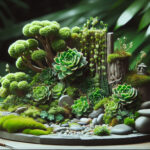Introduction to Crassula Lifespan
Imagine a hardy, resilient succulent that not only thrives with minimal fuss but also graces our homes with its evergreen beauty for years, even decades. That’s the essence of Crassulas, the stalwart companions of plant enthusiasts and the unassuming heroes of the succulent world. But just how long do these green gems stick around? Let’s delve into the world of Crassulas, their general lifespan, and the factors that dictate their years of verdant splendor.
Commonly known as Jade Plants, Crassulas are renowned for their longevity. It’s not just a matter of years; these plants can be a fixture in your living spaces for generations. The secret to their impressive lifespan lies in their adaptable nature and their ability to thrive under a variety of conditions. With proper care, which by the way is quite straightforward, you might find that your Crassula becomes a treasured heirloom, passed down from one green thumb to the next.
Factors such as lighting, watering, and temperature play pivotal roles in determining the longevity of a Crassula. These plants favor bright, indirect light and a watering schedule that allows their soil to dry out between drinks. It’s a tango of moderation, if you will. Just like us, Crassulas don’t enjoy having their feet wet for too long, nor do they appreciate a thirst that stretches! And while they are resilient to many temperature ranges, extreme cold can be the kryptonite to their superplant status.
For those eager to raise these succulents to their optimum potential, understanding the intricacies of their care is essential. If you’re interested in broadening your succulent care know-how, immerse yourself in The Ultimate Guide to Succulent Care, a treasure trove of tips and insights that can turn your green oasis into a perennial paradise. It’s this kind of attention to detail, a personal touch really, that can extend the life of your Crassula significantly.
Ultimately, the lifespan of Crassulas is a testament to their forgiving nature and their will to endure. So, whether you’re a seasoned gardener or a budding plant lover, take comfort in knowing that with a little bit of knowledge and care, your Crassula companions will remain a vibrant part of your home for a long time to come.
Common Species of Crassula and Their Lifespans
When you think about the longevity of houseplants, Crassula species often come to mind as the enduring gems of indoor gardening. These beloved succulents, hailed for their easy care and appealing aesthetics, are not just one-trick ponies; they boast a variety of species, each with unique lifespans that may surprise you. Let’s delve into the fascinating world of Crassula longevity, highlighting some of the common species and their ability to grace our homes for years, or even decades.
The Stalwart Survivor: Crassula ovata (Jade Plant)
Crassula ovata, fondly known as the Jade Plant, is a true symbol of botanical resilience. Often associated with good luck and prosperity, it’s a staple in many homes. But did you know that with the right care, a Jade Plant can live happily alongside your family for up to 20 years or more? That’s right! Imagine celebrating life’s milestones with this evergreen friend steadfast by your side.
A Burst of Color: Crassula ‘Gollum’
Another popular member of the Crassula family is the ‘Gollum’ variety. Recognizable by its trumpet-shaped leaves, this quirky plant adds a touch of whimsical charm to any space. It shares a similar lifespan to the Jade Plant, often surpassing the 15-year mark with proper nurturing. Picture it growing fuller and more vibrant with each passing year—an enduring splash of green in your daily life.
The Compact Beauties: Crassula arborescens (Silver Dollar Plant)
The Silver Dollar Plant, or Crassula arborescens, brings a different texture to the mix with its silver-hued, round leaves. While it may appear delicate, don’t be fooled. This species is another long-lived favorite, capable of thriving for 10 to 15 years as a charismatic fixture on your windowsill. Watch as it matures into a magnificent specimen, reflecting the silver light of the moon into your home.
There’s certainly a Crassula for every corner of your home, and with patience and a bit of green thumb magic, these succulents can provide a lasting legacy of natural beauty. Whether you’re nursing a young Jade Plant into a sprawling tree or marveling at the slow and steady growth of a ‘Gollum’, these crassulas offer a tangible connection to the passage of time and the rewards of plant parenthood.
Remember, the secret to their impressive lifespans lies not just in their hardy nature, but also in the love and care you provide. So, invest a little time in understanding their needs, and these Crassula species will repay you with years of green gratitude and an ever-present reminder of the resilience and beauty of life.
Optimal Conditions for Crassula Growth and Longevity
Ever wondered why certain Crassula plants seem to outlive others in the world of succulents? It’s not just a stroke of luck—it’s all about creating the perfect environment that caters to their sun basking, temperature-tweaking, and humidity-hugging preferences! Trust me, setting up the ideal home for these succulent stunners is like finding a sweet spot that says, “Flourish, my green friend, flourish!”
Let’s talk rays of sunshine first. Picture this: a Crassula soaking up gentle morning light, as it sits perched by an east-facing window. Yes, that’s what they love! These succulent beauties crave bright, indirect light to mimic their native habitat—harsh sunlight is a no-go. Think of it as their daily dose of vitamin D, without the risk of a sunburn.
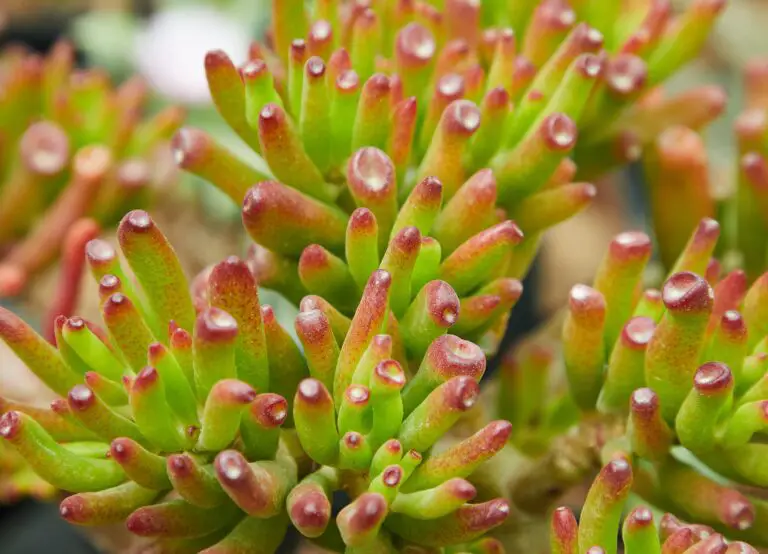
Temperature-wise, Crassulas are just like Goldilocks—they want it just right. Cosy in the day at 65-75°F (18-24°C) and slightly chilled at night to 50-55°F (10-13°C), simulating the cool, South African nights they so fondly remember from their ancestral roots. If mercury dips too low or shoots too high, they might just throw a bit of a tantrum (read: drop leaves).
Humidity can be a bit tricky; too much, and you’ll see our succulent pals struggle. They’re not the tropical rainforest type, after all. Crassulas prefer it on the drier side—a nod to their arid origins. Think Sahara, not Amazon, and you’re on the right track. Keeping them in a well-ventilated area ensures they’re not gasping for that dry air they thrive in.
Curious? For a closer look at their care needs, check out this comprehensive care guide that even the brownest of thumbs can follow. And if you’re diving deeper into the succulent world, why not take a peek at how some succulents shine in the cooler seasons, far beyond what meets the eye in the conventional succulent care narrative.
Stay tuned as we cultivate the know-how to have your Crassula not just living, but absolutely thriving under your devoted green thumb!
Watering and Feeding Your Crassula for Maximum Lifespan
When it comes to nurturing a Crassula, the mantra ‘less is more’ could not ring truer — particularly with watering and feeding. Picture the arid homelands of these plants: they’re built to survive with minimal resources. Yet, when they receive just the right amount of care, they not only survive, they thrive, living for many years.
Water is a precious commodity for Crassula plants, and your watering schedule should mimic the infrequent but substantial rainfall of their native habitat. Imagine the gratifying feeling of quenching your thirst with a cold glass of water after a long day — that’s the sensation your Crassula seeks. Intermittent but deep watering encourages strong root growth, which contributes to an overall robust plant health. Be sure to let the soil dry completely before offering another drink. This approach will safeguard your Crassula against root rot, which is often a death sentence for succulents.
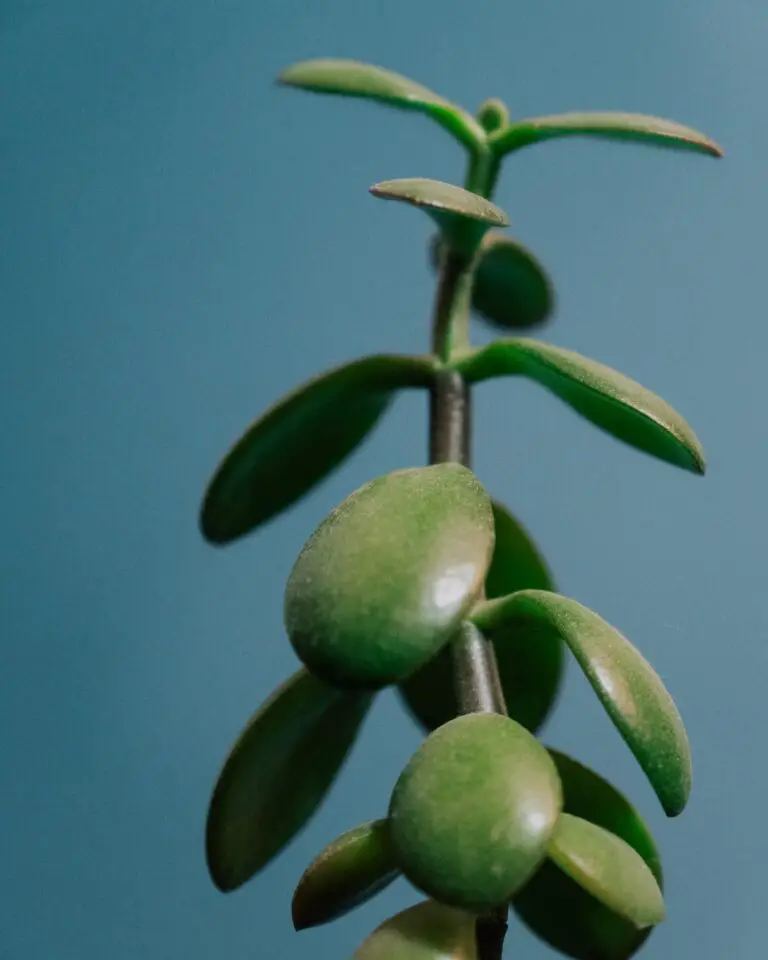
Feeding your Crassula is akin to opting for a balanced diet. A little bit of fertilizer goes a long way — a half-strength, balanced formula during the growing season is an ideal feast for these plants. Overfeeding can lead to a quick but unsustainable growth spurt, robbing your Crassula of its longevity. Think of it as a sprinter that burns out quickly rather than a marathon runner with stamina to last the distance.
To witness the promise of a Crassula’s longevity, consider the tale of Grandma’s Jade, given to her as a small cutting and nurtured through decades. With sparse watering and thoughtful feeding, it has become a large, majestic presence in the family home, lovingly tended to by successive generations. Your Crassula, too, with the right care, can be a green heritage passed down through time.
For those eager to delve deeper into succulent care, our resources on cultivating your own Stonecrop varieties offer a treasure trove of tips and tricks to keep your desert darlings in the pink of health — metaphorically speaking, of course!
The Role of Potting and Repotting in Crassula Health
Imagine, if you will, the journey of a Crassula plant—its life snugly starting in a cozy pot. Much like a goldfish’s growth is dictated by its bowl, a Crassula’s lifeline is inextricably linked to its earthly home. Engage with me in uncovering the secrets of the soil and the rituals of repotting that ensure these succulent friends thrive for years, perhaps even outliving your favorite pair of garden gloves.
Firstly, the foundation of Crassula health lies in the soil mix. It’s not just dirt; it’s a universe of nutrients, aeration, and moisture control. A well-draining mix, akin to their native gritty soils, allows these resilient plants to avoid the dreaded soggy roots— a fast-track ticket to Plant Heaven. Let me paint you a picture: a perfectly balanced mix of coarse sand, peat, and loamy soil is the Crassula’s nirvana, keeping it anchored and satisfied, avoiding the watery woes that can spell disaster.
The art of repotting, while seemingly a mundane task, is a pivotal ceremony in the lifespan of a Crassula. The timing of this event is not random; much like waiting for the perfect moment to snap a sunset photo, one must sense when the Crassula whispers for more space. Typically, this is a dance that occurs every two or three years, aligning with the plant’s growth spurt. Spring—nature’s time for new beginnings—is often the best time to don your gardening gloves and bear witness to this transformative step.
Technique is paramount. Imagine performing a ballet in work boots; that’s what improper repotting feels like to a Crassula. Teasing the roots gently, trimming any that have succumbed to the darkness, and nestling the plant into its new abode with the same care as tucking in a child at night—these are the steps that celebrate the plant’s past and prepare it for a robust future.
The integration of thoughtful potting and skilled repotting is akin to providing a Crassula with a passport filled with stamps, each a testament to its journey through life. And so, with each thoughtful scoop of soil and tender touch of the roots, we extend the legacy of our verdant companions, crafting a tale that spans from the windowsill to the ages.

Common Ailments and Threats to Crassula Longevity
It’s no secret that Crassula plants, with their lush foliage and stout stems, are a striking addition to any space they grace. But as hardy as they may look, they aren’t impervious to the slings and arrows of outrageous fortune—namely, pests and diseases. Ensuring a long, prosperous life for your green companion means standing guard against these common invaders.
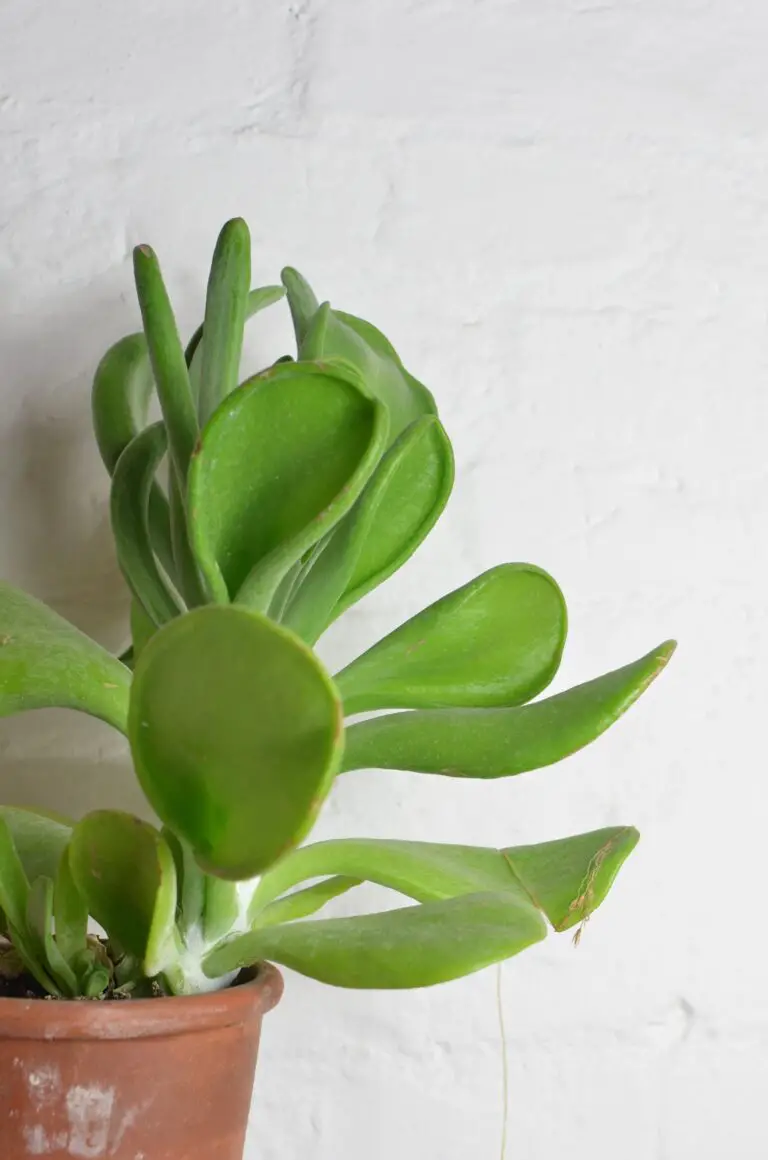
The usual suspects in the world of Crassula culprits include mealybugs, spider mites, and the ever-dreaded fungal infections. Take mealybugs, for example—the bane of many a Crassula’s existence. These tiny vampires latch on to the leaves and stems, siphoning off the sap and vitality of the plant. But fear not, for they can be thwarted by wiping them off with a cotton swab dipped in alcohol or using insecticidal soap.
Spider Mites: A Tangled Web We Do Not Want
Spy tiny webs on your Crassula? You’ve got spider mites. These minuscule pests are masters at going undetected until their damage is already done. Brownish spots on leaves might be the telltale sign that it’s time to act. The remedy? A nice, refreshing shower for your plant can wash away these pesky intruders. For persistent problems, neem oil or miticide sprays can clear up those mite-y concerns.
Fighting Fungus: Prevention is the Best Medicine
When it comes to fungal foes, the name of the game is prevention. Overwatering creates a haven for fungi, leading to root rot or unsightly mold on the soil surface. To keep your Crassula safe, make sure it’s living in well-draining soil, and follow the rule of thumb: only water when the soil is dry to the touch. Caught early, affected areas can sometimes be pruned away, and an application of fungicide can help stop the spread.
Remember, the road to a long-lived Crassula is paved with vigilance and care. Keep a close eye on your leafy friend, and at the first sign of trouble, be ready to show those pests and diseases the door. With the right strategies, your Crassula can live to a ripe old age, bringing a touch of nature’s splendor to your home for years to come.
Tailoring Care for Different Crassula Varieties
Imagine each Crassula as a character in a play, each with its own unique role and personality. Just as actors need tailored costumes and prompts to give a riveting performance, Crassula types flourish with personalized care fitting their distinctive needs.
Take the Crassula ovata, commonly known as the Jade Plant. Picture a robust plant with a stout trunk, akin to a miniature tree, standing tall in your living room. This variety is a marathon runner, going the distance with proper care. Its thick, glossy leaves, which remind one of jade coins, thrive on bright light and minimal water. But drench those roots too often, and your hearty endurance runner will stumble and falter.
Now, let’s pivot to the daintier Crassula arborescens, or the Silver Dollar Plant. With its silvery, round foliage, it’s a high jumper that soars with a well-draining pot and a bit of humidity. Other types like the delicate Crassula muscosa, with its intricate, lacy pattern of leaves, could be equated to a precise ballet dancer, needing a balance of sunlight and shade to perform its best dance.
Across the spectrum lies the Crassula capitella, also known as Campfire Plant, with its fiery red-tipped leaves that almost appear ablaze when kissed by the sun. This variety brings the spectacle of its performance through “stress” induced by bright light, quite a paradox to what we usually associate with the word stress!
Indulge in the real-life analogy of a gardener whose Crassula collection was a horticultural theater. By studying each plant’s script carefully and providing individualized care, the gardener’s crassulas outlived those of many peers, turning his home into an age-defying sanctuary of verdant vitality.
It’s not mysticism; it’s understanding that like humans, plants have lives that can be elongated with the right nurture and environment. To witness the transformation yourself and become a Crassula playwright, take a look at this insightful video offering a deep dive into the wonders of Crassula care. Happy caretaking!
The Natural Life Cycle of a Crassula Plant
Imagine the tiny seed of a Crassula, a speck brimming with potential. From this fleck emerges a succulent that’s capable of outliving entire generations of its caretakers. Let’s take a moment to appreciate the remarkable journey of these resilient plants.
Germination: The Succulent’s Humble Beginnings
Crassula seeds are tiny, yet within them lies the blueprint for new life. Under the right conditions—usually a warm environment with indirect light and minimal moisture—these seeds spring into action. Germination marks the profound moment when life begins, and a new Crassula sprout pushes through the soil with a willpower that seems larger than life.
Maturity: Growing Strong and Sturdy
As a Crassula matures, it embodies resilience. Each leaf, thick and fleshy, serves as a reserve for water, empowering the plant to withstand dry periods. In our homes, these succulents often grow more slowly than in the wild, yet with proper care, they can become a long-lasting companion, gracing our living spaces with their presence for decades to come.
Blooming: A Spectacle of Survival
The moment a Crassula blooms is nothing short of a celebration. Flush with tiny star-like flowers, it reminds us that survival isn’t merely about enduring; it’s also about moments of sheer beauty. Typically, Crassula blooms in the winter months, when other plants rest, adding a splash of brightness to the colder, darker days.
To witness a Crassula’s bursting into bloom is to observe a spectacle that took years in the making—a culmination of care, consistent light, and just enough love from the gardener’s tender administrations.
Dormancy: A Time for Rest and Rejuvenation
After the exuberance of blooming, Crassula plants embrace a period of dormancy. During the hotter months, they slow down and conserve energy, much like a wise elder taking a well-deserved rest. It’s during this stage that our leafy friends teach us the value of rest, gathering strength for the next cycle.
Now, for a bit of practical wisdom on caring for your own Crassula, here’s a video that delves into the life of these compelling plants:
Understanding the life cycle of a Crassula brings a sense of awe to the everyday. From a single seed to a flourishing plant, sometimes outliving its caregiver, this succulent’s journey is a testament to the wonders of nature’s design.
Crassula Lifespan: Myths vs. Reality
Gardening enthusiasts and succulent lovers alike often find themselves pondering the notion, “how long do crassula live?” Bringing these fleshy-leaved beauties into our homes, we’re vested in the promise of a long-term, leafy companion. Yet, somewhere between myth and marketing, the true longevity of Crassula plants becomes shrouded in horticultural hearsay.

Let’s set the record straight—despite what you’ve heard at the garden center, not all Crassula plants are destined to outlive your pet tortoise. Realistically, while some species can thrive for decades with proper care, others may have a humbler time frame. Considering their native harsh environments, it’s truly admirable how they’ve adapted to subsist with minimal fuss. But that doesn’t mean they’re immune to the ailments that can curtail their stay in our plant collections.
Take, for example, the commonly cherished Crassula ovata, often referred to as the “Jade Plant.” It’s touted as a perennial home fixture, yet untimely demise can occur due to overwatering—a novice mistake. Conversely, witness the triumph of a seasoned grower’s Crassula, which persists year after year, basking contentedly on a sunny windowsill, its jade-green aura a silent testament to the grower’s prowess.
Delving into the contrast of myths versus reality, consider the anecdotal tales of century-old Crassula passed through generations. These stories nurture the idea that Crassula are the Methuselahs of houseplants. Nevertheless, without proper sunlight, judicious watering, and the occasional “spa treatment”—a refreshing dose of fertilizer and repotting—our plump-leafed friends may fall short of this legendary longevity.
Our journey with Crassula is a tale of balance—navigating the fine line between neglect and over-care. Whether your Crassula becomes a centennial celebration or a brief botanical affair hinges on the care you provide. Armed with knowledge and a watchful eye, you stand a fair chance at debunking the myths, honing reality, and potentially writing your own long-lived Crassula success story.
The Legacy of Crassula: From Propagation to New Generations
In the captivating world of succulents, Crassula plants—a diverse genus that includes the popular Jade plant—stand out for their resilience and longevity. Yet, it’s not just their sturdiness that makes them extraordinary, but how they can achieve near-immortality through the art of propagation. For many Crassula enthusiasts, propagation isn’t merely a gardening practice; it’s a magical process where life begets life, ensuring the plant’s legacy continues well beyond its natural span.
How do these succulent marvels accomplish this feat, you may wonder? It starts with a single leaf or stem, often plucked from a mature Crassula. In the hands of a patient gardener, these pieces can morph into full-fledged plants, given the right conditions. Just imagine: every leaf that falls has the potential to become a whole new plant. It’s almost like the Crassula has found its formula for eternal youth, isn’t it? And it’s through this propagation prowess that the Crassula can live on for generations, its legacy preserved as each cutting grows, flourishes, and in turn, produces its own cuttings to continue the cycle.
Real-life examples abound, with many Crassula owners sharing stories of plants passed down from grandparents or received as cuttings from a friend—their history intertwined with our own. Here lies a beautiful intersection of nature and nurture: these plants can outlive their original habitat, not merely surviving in pots and planters but thriving under the care of successive generations of gardeners.
Let’s take a peek at how simple and rewarding this process can be. This clip offers a delightful glance at the ease with which a lone Jade plant leaf can kick-start a lineage of lush greenery. Ready to witness the start of a new Crassula generation in your home?
Some green thumbs have honed the practice of propagation to an art form, constantly experimenting with various substrates and conditions to perfect the craft. So, whether you’re an experienced gardener or a budding plant enthusiast, know this: propagating your Crassula isn’t just about growing more plants—it’s about contributing to an ageless saga where each new sprout honors the enduring resilience of these remarkable succulents.
Frequently Asked Questions
Have you ever found yourself marveling at the hardy Crassula sitting proudly on your windowsill, and wondered just how long it will keep you company? You’re not alone! Crassula plants, those resilient little troopers, are the subject of much curiosity when it comes to their staying power. So, let’s dive into the green heart of these questions and unearth some answers!
Crassula Care: Your Ticket to Longevity
First things first, the proper care is key. Imagine, if you will, a Crassula, thriving in just the right spot with a generous splash of sunshine and the perfect amount of water – it’s a formula for success. These succulents are not fond of helicopter plant-parenting; they prefer a ‘less is more’ approach. Avoid overwatering and give them some well-draining soil, and you might just see your Crassula outlive your latest smartphone!
Different Strokes for Different Crassula Folks
Just like people, each Crassula species brings its own spice to life. Some might prefer the cozy confines of a small pot, living a cheerful but brief life of a few years. Others stand tall, stretching out their leafy limbs for decades, defying the very concept of time. Take the Crassula ovata, for example – properly doted on, this stalwart could be passing stories on to your grandkids!
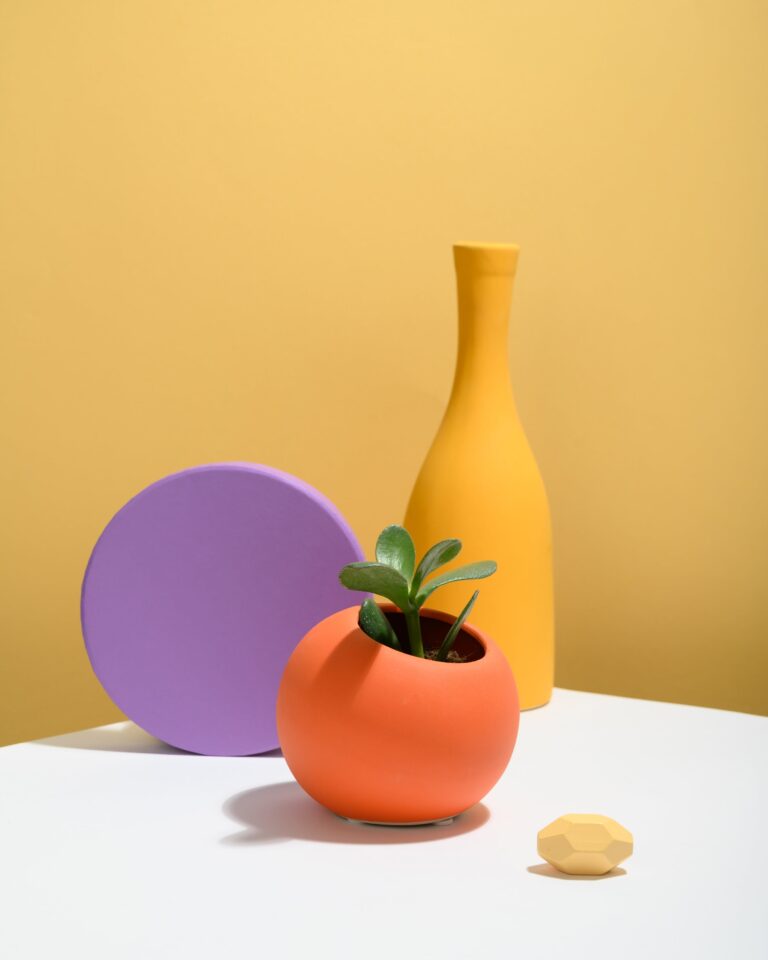
Environmental Impact: A Crassula’s Best Friend or Foe?
Let’s paint a picture: two Crassula plants, identical twins at birth. One lives in the wild embrace of nature with just the right conditions; the other, transitioning through various high-rise apartments, facing air-conditioners and heaters head-on. It’s no surprise that the first might thrive well into its twenties, while the other might struggle to celebrate its tenth birthday. The moral? A stable environment can be a Crassula’s fountain of youth.
Managing Plant Health: The Secret to a Long Crassula Life
Last but not least, keeping your green friend hale and hearty is crucial. Picture a Crassula with each leaf pampered, monitored for pesky pests, and regularly treated to a spa day with nutrient-rich fertilizers. This level of care can be the difference between a fleeting acquaintance and a lifelong companion. It’s not just about survival; it’s about enabling your Crassula to thrive year after year, becoming a timeless feature in your living tapestry.
